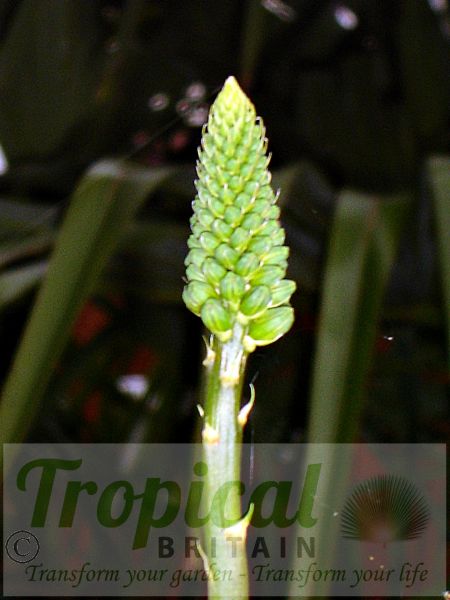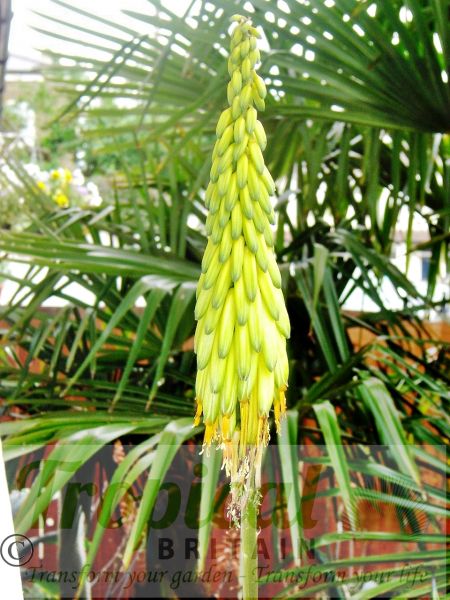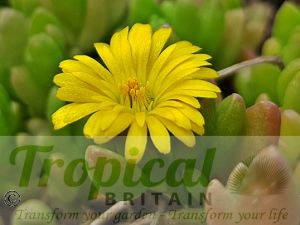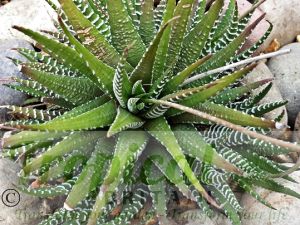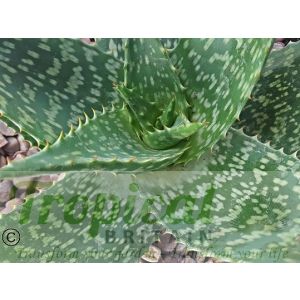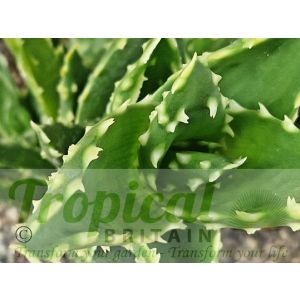Aloe striatula, is found in the wild in the mountains bordering the Karoo and in the Eastern Cape from Graaff-Reinet in the west to Queenstown in the east but also stretching north as far as Aliwal North and across the Orange River into the Free State and also into Lesotho, often at very high elevations. In this region the summers are very hot and dry, with temperatures usually in excess of 30°C and the winters are often very cold, with frost and snowfall on higher ground. Its natural range includes the highest point in the Cape in the heart of the Stormberg Mountains not far from where South Africa's only ski resort is located.
It is something of a debate whether Aloe striatula is the hardiest of the aloes or whether Aloe aristata or Aloe polyphylla are in fact hardier. Personally, I find Aloe aristata to be somewhat hardier and more resilient. Whatever the reality, we can safely say that this Aloe is hardy in much of the UK and like some Opuntias, it often copes with winter stress by shrivelling somewhat, its long leaf blades losing condition and tension until growth is started again in the spring. When growth does resume, it is rapid and the plant will increase appreciably in size each year, forming a thin woody trunk that branches prolifically. Left to its own devices it will create a low dense, multi-stemmed, rambling thicket which is highly attractive and even more so when the beautiful yellow flowers emerge in summer, held aloft on a thickish stem, not unlike a Kniphofia.
Aloe striatula has a curious alien-like presence that is strangely compelling.
Because of its resilient hardiness and its undemanding nature, tolerant of both drought and frost, it is an essential plant for anyone designing a xerophytic garden. Highly recommended.
Additional Information
| Order | Asparagales |
|---|---|
| Family | Asphodelaceae |
| Sub-Family | Asphodeloideae |
| Synonyms | Aloe aurantiaca, Aloe cascadensis, Aloe macowanii, Aloe striatula var. striatula, Aloe subinermis, Aloiampelos striatula |
| Geographical Origin | South Africa |
| Cultivation | Full sun. Dry. A well drained soil to which generous amounts of sand, grit and shingle have been mixed. |
| Eventual Height | 1 m |
| Eventual Spread | Rambling habit : 2-4 m |
| Hardiness | Mine have survived down to -14 C. Must have a freely draining substrate to do well outdoors in the UK. |
-
Large healthy plantMy plant is large and healthy already with an offshoot. It was potted in very free draining stones soil so all the soil fell off when I repotted it. However it’s taken well to its new pot so fingers crossed.
Posted on

Free DELIVERY
ON ALL ORDERS OVER £99THIS OFFER IS VALID ON ALL OUR STORE ITEMS.





